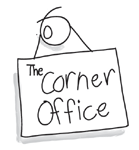The Canadian Patent Landscape:
Many high tech companies forego filing patents in Canada, opting instead to begin with an application in the US. One reason? The US is their primary customer market, so enforceability there is of paramount interest. Whether one begins with a first filing in the US, or a subsequent filing, Canadian activity in the US Patent and Trademark Office should be an interesting indicator of Canadian innovation. Or so you would think.
Bill Heinze reports on the recent statistics published by the World Intellectual Property Organization's "World Patent Report: A Statistical Review (2008). They don't paint a pretty picture about invention creation in Canada:
1. Canadian activity at the US PTO is relatively light: "Of the approximately 6.1 million patents were in force in 2006, the largest number of patents in force were in the United States of America (1.8 million in 2006). However, the majority of patents in force were owned by applicants from Japan.Applicants from Japan, the United States of America, the Republic of Korea and Germany received 73% of total patent grants worldwide. Between 2000 and 2006, the number of patents granted to applicants from China and the Republic of Korea grew by 26.5% and 23.2% a year, respectively (average annual growth rate)."
2. When measured against other economic indicators of growth, Canadian patent filings place us relatively low on the world ladder: Norway, Iceland and Ireland had more patent filings per resident GDP than Canada.
3. Actual local patent activity is alarmingly light: by 2006, the number of patent applications awaiting examination at the Canadian Patent office (205,776), was relatively small (compared to the USPTO and the JPO) and has been stable over time.Only approximately 12% of those Canadian patent office filings in 2006 were made by Canadians; the rest were registrations of patents issued in other countries by non-residents.) By contrast, the number of patent applications awaiting examination at the USPTO was 1,051,502.
Patents are only one form of intellectual property creation, but none of these figures seem to support our positioning of Canada as a country of innovators. Food for thought.
Bill Heinze reports on the recent statistics published by the World Intellectual Property Organization's "World Patent Report: A Statistical Review (2008). They don't paint a pretty picture about invention creation in Canada:
1. Canadian activity at the US PTO is relatively light: "Of the approximately 6.1 million patents were in force in 2006, the largest number of patents in force were in the United States of America (1.8 million in 2006). However, the majority of patents in force were owned by applicants from Japan.Applicants from Japan, the United States of America, the Republic of Korea and Germany received 73% of total patent grants worldwide. Between 2000 and 2006, the number of patents granted to applicants from China and the Republic of Korea grew by 26.5% and 23.2% a year, respectively (average annual growth rate)."
2. When measured against other economic indicators of growth, Canadian patent filings place us relatively low on the world ladder: Norway, Iceland and Ireland had more patent filings per resident GDP than Canada.
3. Actual local patent activity is alarmingly light: by 2006, the number of patent applications awaiting examination at the Canadian Patent office (205,776), was relatively small (compared to the USPTO and the JPO) and has been stable over time.Only approximately 12% of those Canadian patent office filings in 2006 were made by Canadians; the rest were registrations of patents issued in other countries by non-residents.) By contrast, the number of patent applications awaiting examination at the USPTO was 1,051,502.
Patents are only one form of intellectual property creation, but none of these figures seem to support our positioning of Canada as a country of innovators. Food for thought.


<< Home